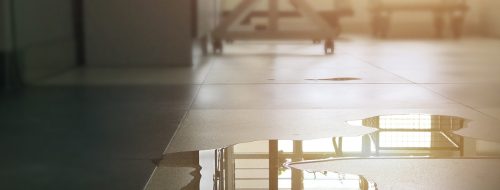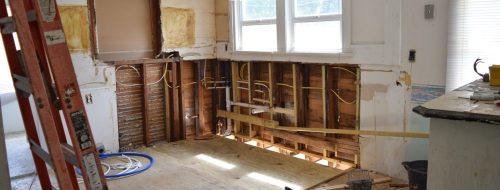Helping Marietta and the Greater Atlanta Area Rebuild After a Flood
It doesn’t take a river to cause flood damage—sometimes it’s a heavy downpour, a backed-up sump pump, or a broken appliance that turns your home into a soggy mess. And just when you think you’ve dried up the worst of it, mold creeps in where the eye can’t see. Flood damage unravels your sense of safety, one waterlogged corner at a time.
At Big Bear Restoration, we specialize in putting things back together after the water moves in. We act fast to extract standing water, dry every hidden pocket of moisture, and rebuild the parts of your home or business hit hardest. With round-the-clock response and a crew that’s seen it all, we make flood recovery less overwhelming—and a whole lot more manageable.
From Soaked to Solid: How We Tackle Flood Damage
Flood restoration is a step-by-step strategy to dry, clean, and rebuild your space correctly. We take swift, strategic steps to bring your property back to life, protect it from further harm, and get you feeling safe and settled again. Here’s how the process typically goes:
Flooding in Atlanta Isn’t One-Size-Fits-All
Flooding takes many forms in a city like Atlanta, with its heavy rains, hilly terrain, and aging infrastructure. Knowing what type you’re dealing with can help you understand the damage and learn how Big Bear Restoration can help clean it up.
Georgia Flood Damage Repair: What Homeowners Ask Most
Not at all. Flood damage doesn’t need a storm to leave a mark. Burst pipes, failed appliances, clogged drains, or even a forgotten tub can lead to severe flooding inside a home or business.
What matters most is how much water is involved and how far it spreads. If you’re ankle-deep in water, no one’s splitting hairs over whether it came down the roof or through the floor. The damage is real, and we’re ready to handle it.
While both involve water, the source is what sets them apart. Water damage often comes from inside the property—leaky pipes, overflowing sinks, or broken water heaters. Flood damage, however, is usually caused by outside forces like heavy rainfall, rising rivers, storm surges, or groundwater pushing its way in.
The restoration approach can differ, too. Floodwater often carries contaminants, meaning cleanup requires extra caution, specialized disinfection, and sometimes removing more materials than a clean water event would require. Either way, we tackle both with the right tools, training, and experiences to get your home safe and dry again.
It sounds rare, but it happens more than you’d think, especially after major storms or electrical fires, where sprinkler systems or fire hoses leave behind just as much damage as the flames. In these situations, restoration gets a little more complex. You’re not just dealing with soot and smoke; you’re also facing waterlogged drywall, mold risk, and structural instability.
Big Bear Restoration handles both. We’ve managed projects where water and fire damage overlapped, and we know how to untangle the chaos without dragging in a dozen different contractors.
Yes, we do. Once the water’s out, the structure is dry, and the risk of mold is under control, we don’t just walk away. Big Bear handles the complete rebuild, including drywall, flooring, framing, roofing, and finish work. That means you don’t have to juggle multiple vendors or worry about timelines falling apart. We’ll bring your property back to life and keep the process as stress-free as possible.
As soon as it’s safe to do so. The longer water sits, the more damage it causes. Within 24 to 48 hours, you could already be looking at mold, warping wood, and soaked insulation that must be removed.
Our team is on call 24/7 because we know how critical those first few hours are. If flood damage hits, don’t wait. Give us a call, and we’ll be there fast to stop the spread and start the recovery.
Clean, Grey, or Black? The Three Kinds of Water Damage Explained
When water enters your home or business unexpectedly, it’s easy to see only the mess…
How a Single Company Simplifies Restoration and Reconstruction
When disaster strikes, like a burst pipe flooding your living room, a fire leaving smoke…

